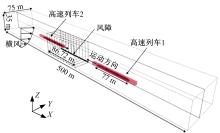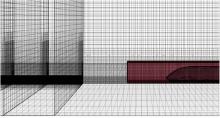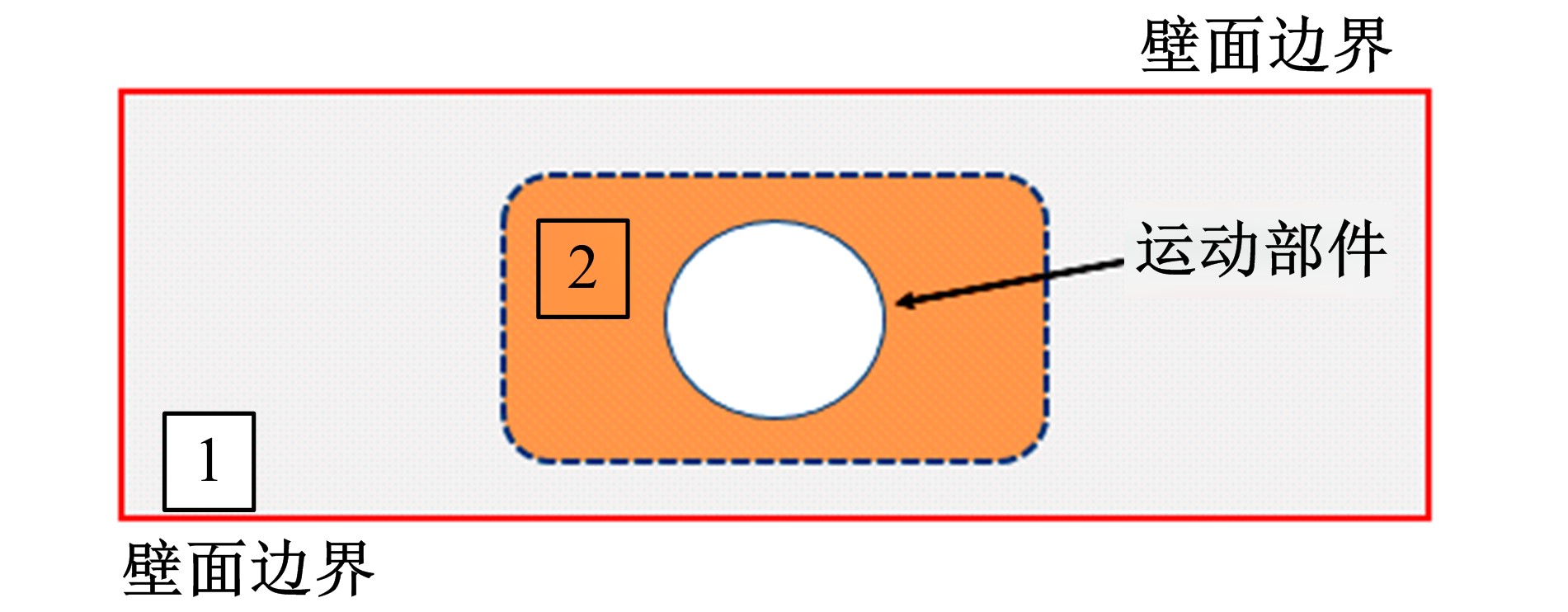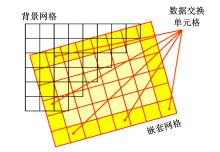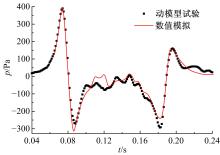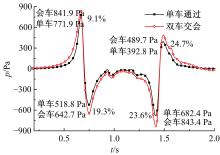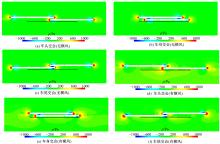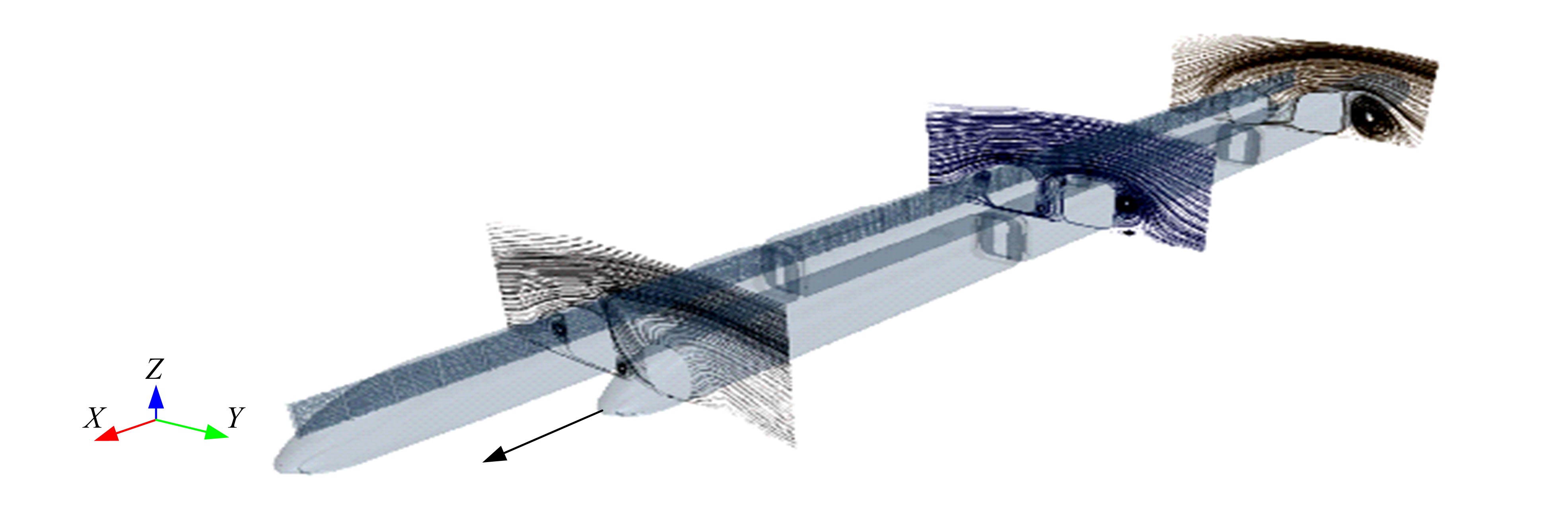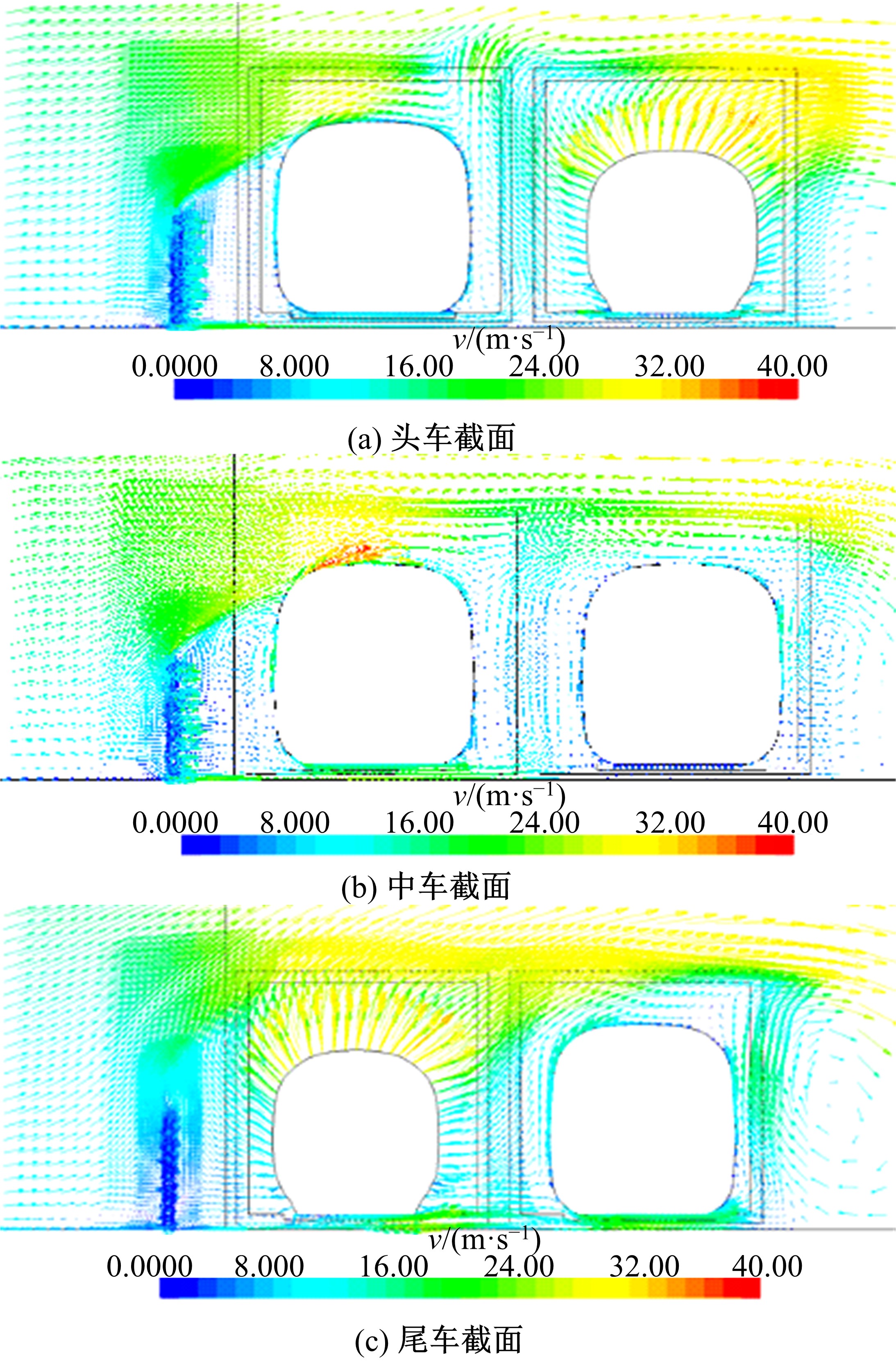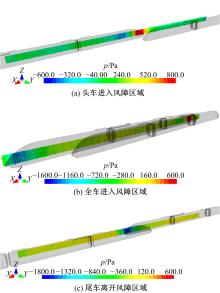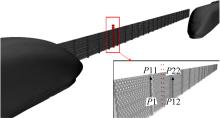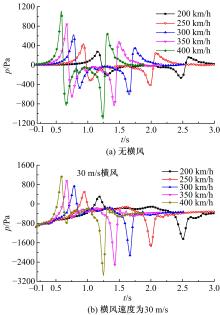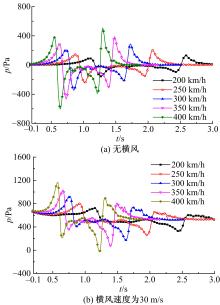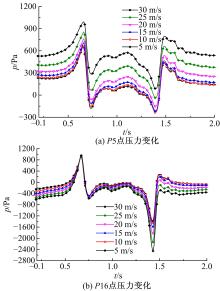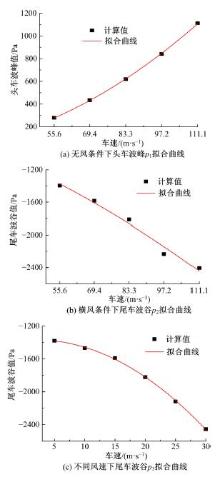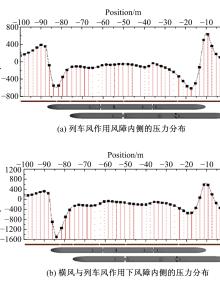吉林大学学报(工学版) ›› 2019, Vol. 49 ›› Issue (4): 1054-1062.doi: 10.13229/j.cnki.jdxbgxb20180172
• • 上一篇
横风下高速列车会车压力波对风障的气动冲击
- 1. 北京交通大学 土木建筑工程学院,北京100044
2. 河南省固始县人民防空办公室,河南 信阳 465200
Pressure pulse on windbreak impacting by cross⁃wind coupling with high⁃speed trains passing each other
Run⁃dong LIU1( ),Jun MAO1(
),Jun MAO1( ),Yan⁃hong XI1,Hong⁃yu ZHANG1,Fei PENG2
),Yan⁃hong XI1,Hong⁃yu ZHANG1,Fei PENG2
- 1. School of Civil Engineering, Beijing Jiaotong University, Beijing 100044,China
2. People Air Defense Office of Gushi County of Henan Province, Xinyang 465200,China
摘要:
高速列车会车时的压力波会对线路两侧的风障产生气动冲击作用,有可能导致风障的结构失稳,给列车运行带来安全隐患。采用能真实模拟列车运动的嵌套网格方法以及保留开孔特性的腔室耗能型风障,以某CRH型车为研究对象,计算了不同列车车速和不同横风风速下单侧风障内列车交会对风障的冲击过程。研究结果表明:高速列车行驶过程中,由于其高速运动对周边空气的排挤以及尾部气流的补充,在车身附近形成“正?负?负?正”4个压力波;会车过程中,两列车的压力波相互叠加耦合并作用在线路一侧的风障上;随着车速的增大,压力波极值增大,换向时间减小,变化率增大;随着风速的增大,横风作用与列车风作用相互耦合,放大了风障内侧的负压值;压力波正压峰值在车体长度范围之外,负压峰值在车体长度范围之内,头车正压波峰距头车鼻锥处距离最近;在横风作用下,列车风压力峰值会向后移动。
中图分类号:
- U270
| 1 | Baker C . The flow around high speed trains[J]. Journal of Wind Engineering & Industrial Aerodynamics, 2010, 98(6/7): 277⁃298. |
| 2 | Liu J L . Computations of two passing⁃by high⁃speed trains by a relaxation overset⁃grid algorithm[J]. International Journal for Numerical Methods in Fluids, 2004, 44(12): 1299⁃1315. |
| 3 | Bourdin P , Wilson J D . Windbreak aerodynamics: is computational fluid dynamics reliable[J]. Boundary⁃Layer Meteorology, 2008, 126(2): 181⁃208. |
| 4 | 李人宪, 赵晶, 刘杰, 等 . 高速列车会车压力波对侧窗的影响[J]. 机械工程学报, 2010, 46(4): 87⁃92. |
| Li Ren⁃xian , Zhao Jing , Liu Jie , et al . Influence of air pre⁃ssure pulse on side windows of high⁃speed trains passing each other[J]. Journal of Mechanical Engineering, 2010, 46(4): 87⁃92. | |
| 5 | 刘小燕, 陈春俊, 何洪阳 . 高速列车隧道会车时气动载荷的研究[J]. 机械设计与制造, 2014(11): 161⁃164. |
| Liu Xiao⁃yan , Chen Chun⁃jun , He Hong⁃yang . Study on aerodynamic loads of high⁃speed train crossing through a tunnel[J]. Machinery Design and Manufacture, 2014(11): 161⁃164. | |
| 6 | 许建林, 孙建成, 梅元贵, 等 . 高速列车隧道内交会压力波基本特性数值模拟研究[J]. 振动与冲击, 2016, 35(3): 184⁃191. |
| Xu Jian⁃lin , Sun Jian⁃cheng , Mei Yuan⁃gui , et al . Numerical simulation on crossing pressure wave characteristics of two high⁃speed trains in tunnel[J]. Journal of Vibration and Shock, 2016, 35(3): 184⁃191. | |
| 7 | 郗艳红, 毛军, 柳润东, 等 . 高速列车明线会车压力波波幅研究[J]. 华南理工大学学报:自然科学版, 2016, 44(3): 118⁃127. |
| Xi Yan⁃hong , Mao Jun , Liu Run⁃dong , et al . Study on aerodynamic loads of high⁃speed train crossing through a tunnel[J]. Journal of South China University of Technology (Natural Science Edition), 2016, 44(3): 118⁃127. | |
| 8 | 何旭辉, 邹云峰, 杜风宇 . 风屏障对高架桥上列车气动特性影响机理分析[J]. 振动与冲击, 2015, 34(3): 66⁃71. |
| He Xu⁃hui , Zou Yun⁃feng , Du Feng⁃yu . Mechanism analysis of wind barrier's effects on aerodynamic characteristics of a train on viaduct[J]. Journal of Vibration and Shock, 2015, 34(3): 66⁃71. | |
| 9 | 刘峰, 姚松, 张洁, 等 . 动车组横风环境下的交会气动效应[J]. 中南大学学报:自然科学版, 2016, 47(1): 307⁃313. |
| Liu Feng , Yao Song , Zhang Jie , et al . Aerodynamic effect of EMU passing by each other under crosswind[J]. Journal of Central South University (Science and Technology) 2016, 47(1): 307⁃313. | |
| 10 | 李波, 杨庆山, 冯少华 . 防风栅对高速列车挡风作用的数值模拟[J]. 工程力学, 2015, 32(12): 249⁃256. |
| Li Bo , Yang Qing⁃shan , Feng Shao⁃hua . Windbreak performance of wind fence on high speed train based on numerical simulation[J]. Engineering Mechanics, 2015, 32(12): 249⁃256. | |
| 11 | Khier W , Breuer M , Durst F . Flow structure around trains under side wind conditions: A numerical study[J]. Computers and Fluids, 2000, 29(2): 179⁃195. |
| 12 | 毛军, 郗艳红, 高亮, 等 . 腔室耗能型高速铁路风障的减载抗风性能[J]. 机械工程学报, 2014, 50(4): 99⁃106. |
| Mao Jun , Xi Yan⁃hong , Gao Liang , et al . Wind resistance performance of the windbreak with air chambers dissipating energy applied in high⁃speed railway[J]. Journal of Mechanical Engineering, 2014, 50(4): 99⁃106. | |
| 13 | 王福军 . 计算流体动力学分析⁃CFD软件原理与应用[M]. 北京:清华大学出版社, 2004. |
| 14 | 毛军, 郗艳红, 杨国伟 . 侧风风场特征对高速列车气动性能作用的研究[J]. 铁道学报, 2011, 33(4): 22⁃30. |
| Mao Jun , Xi Yan⁃hong , Yang Guo⁃wei . Research on influence of characteristics of cross wind field on aerodynamic performance of a high⁃speed train[J]. Journal of the China Railway Society, 2011, 33(4): 22⁃30. |
| [1] | 李静,石求军,刘鹏,户亚威. 基于纵向车速估算的商用车ABS神经网络滑模控制[J]. 吉林大学学报(工学版), 2019, 49(4): 1017-1025. |
| [2] | 杨顺,蒋渊德,吴坚,刘海贞. 基于多类型传感数据的自动驾驶深度强化学习方法[J]. 吉林大学学报(工学版), 2019, 49(4): 1026-1033. |
| [3] | 陈鑫,李铭,阮新建,王宁,王佳宁. 基于浸入单元法和延迟分离涡模型的Ahmed车模尾流涡旋结构[J]. 吉林大学学报(工学版), 2019, 49(4): 1034-1042. |
| [4] | 周华,杨志刚,朱晖. 基于整车风洞试验的MIRA车型数值计算[J]. 吉林大学学报(工学版), 2019, 49(4): 1043-1053. |
| [5] | 常成,宋传学,张雅歌,邵玉龙,周放. 双馈电机驱动电动汽车变频器容量最小化[J]. 吉林大学学报(工学版), 2018, 48(6): 1629-1635. |
| [6] | 席利贺,张欣,孙传扬,王泽兴,姜涛. 增程式电动汽车自适应能量管理策略[J]. 吉林大学学报(工学版), 2018, 48(6): 1636-1644. |
| [7] | 何仁,杨柳,胡东海. 冷藏运输车太阳能辅助供电制冷系统设计及分析[J]. 吉林大学学报(工学版), 2018, 48(6): 1645-1652. |
| [8] | 那景新,慕文龙,范以撒,谭伟,杨佳宙. 车身钢-铝粘接接头湿热老化性能[J]. 吉林大学学报(工学版), 2018, 48(6): 1653-1660. |
| [9] | 刘玉梅,刘丽,曹晓宁,熊明烨,庄娇娇. 转向架动态模拟试验台避撞模型的构建[J]. 吉林大学学报(工学版), 2018, 48(6): 1661-1668. |
| [10] | 赵伟强, 高恪, 王文彬. 基于电液耦合转向系统的商用车防失稳控制[J]. 吉林大学学报(工学版), 2018, 48(5): 1305-1312. |
| [11] | 宋大凤, 吴西涛, 曾小华, 杨南南, 李文远. 基于理论油耗模型的轻混重卡全生命周期成本分析[J]. 吉林大学学报(工学版), 2018, 48(5): 1313-1323. |
| [12] | 朱剑峰, 张君媛, 陈潇凯, 洪光辉, 宋正超, 曹杰. 基于座椅拉拽安全性能的车身结构改进设计[J]. 吉林大学学报(工学版), 2018, 48(5): 1324-1330. |
| [13] | 那景新, 浦磊鑫, 范以撒, 沈传亮. 湿热环境对Sikaflex-265铝合金粘接接头失效强度的影响[J]. 吉林大学学报(工学版), 2018, 48(5): 1331-1338. |
| [14] | 王炎, 高青, 王国华, 张天时, 苑盟. 混流集成式电池组热管理温均特性增效仿真[J]. 吉林大学学报(工学版), 2018, 48(5): 1339-1348. |
| [15] | 金立生, 谢宪毅, 高琳琳, 郭柏苍. 基于二次规划的分布式电动汽车稳定性控制[J]. 吉林大学学报(工学版), 2018, 48(5): 1349-1359. |
|
||
